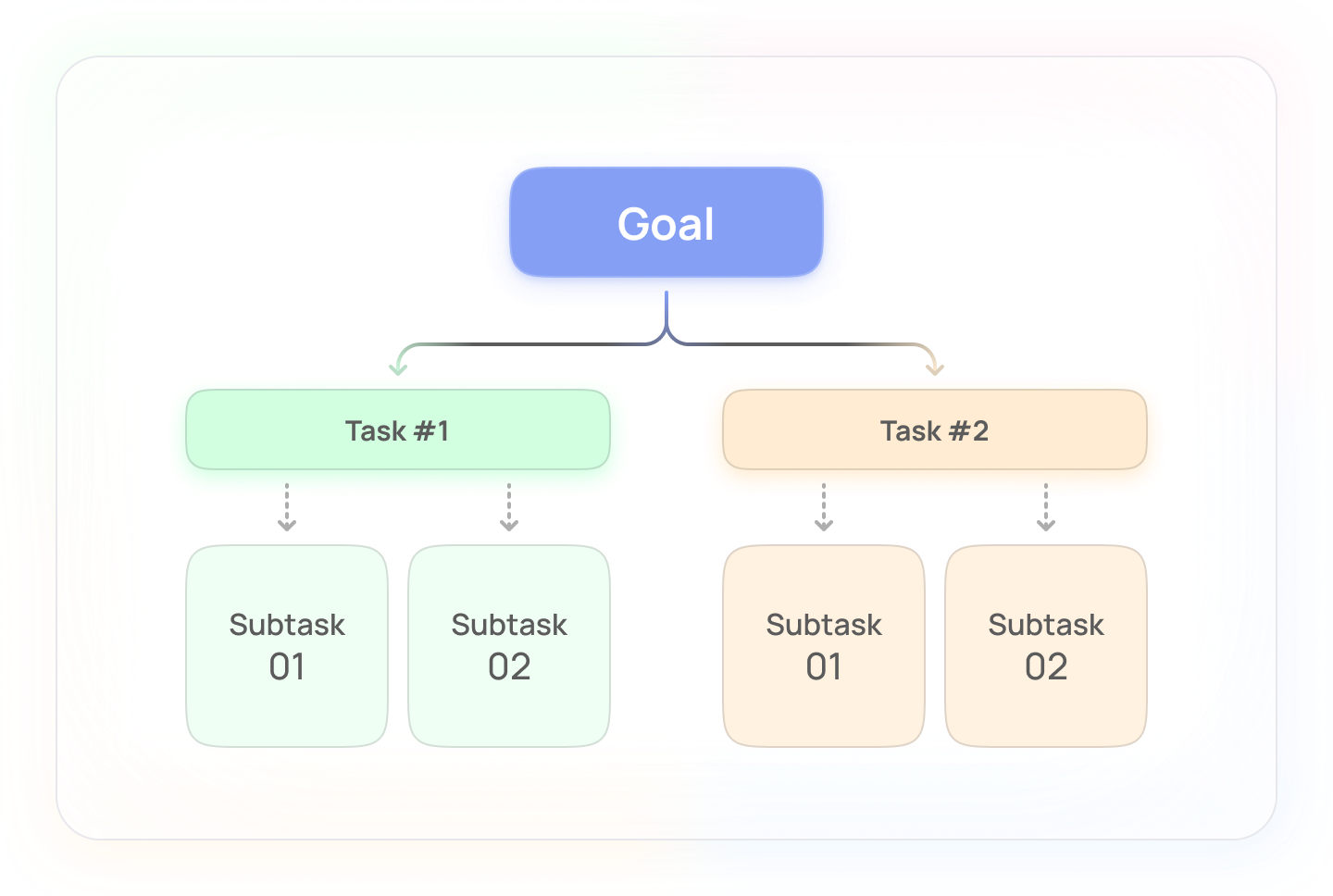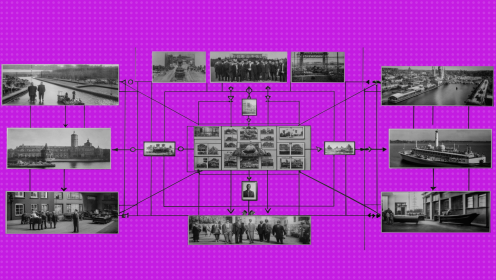I'm currently working on three projects, not counting additional work cases. And it turned out to be not as hard as it seemed at first glance.
Initially, I was in great confusion and did not understand how I could combine everything, be in time everywhere and not fall out of the workflow for any project. But I will lift the veil of secrecy, the most difficult thing is to start. When you still do not have an understanding of why all this is being done, it is difficult to motivate yourself for the result. Therefore, before starting work, it is important to draw up an action plan in order to set the right vector, outline goals and objectives. And to begin with, stop and ask yourself the question: “What should I do with my project, what am I striving for and what do I want to achieve?”
First we set goals, then tasks
I divided goals and objectives for a reason. Before that, I did not think about the fact that these are completely different entities.
The point is this. There are usually several people working on a project. In order for it to develop in the right direction, it is important to synchronize the work of team members. Everyone must understand what he is doing, how and why, so that the actions of all are aimed at achieving common goals. To synchronize work, you need to develop a strategy - a step-by-step action plan that spells out the goals you need to strive for, and tasks - how the team will achieve the goals. Everyone will understand their area of responsibility and will be able to work according to the plan.
Goals are the results that the team wants to achieve, what all the work is for. For example, “We want to increase the number of sales through the site by 50% compared to last year with the help of targeting and influencers.”
Goals are a step-by-step plan to achieve those goals. For example, competitor analysis, buying advertising from bloggers, creating an Instagram account to promote a brand. All these tasks can be scheduled for a day in order to gradually solve the most relevant, or for a longer period, for example, a week. Setting goals for different time frames, monitoring the process, and analyzing successes and failures is a healthy approach to planning.
By the way, the goals of projects tend to change, because the interests, directions of development and priorities of teams and companies change. Some tasks turn out to be impossible or meaningless, and some are postponed indefinitely. Take it easy - you can not set goals, and then always sit still, without processing them under any circumstances.
It is important to formulate goals and develop a strategy to achieve them at the initial stage - this will help to avoid misunderstandings and mistakes, and consequently - loss of time. Clear goals allow you to achieve results faster and evaluate your achievements. For example, it helps me to work more efficiently - I always know what I need to do in order to achieve my goal. To do this, I create a step-by-step plan - I determine which tasks will help achieve the goal, as well as which sub-tasks will help those tasks to be completed.

The main rules for setting goals in a project
In order for the project to be effective, it is important to adhere to the following principles when developing goals for it:
- Identify all the weak points and problems of the project. It is on what now needs to be finalized that the goals will depend. They should make sense and be relevant to the project.
- Divide the global goals of the project into small ones. Many set common goals for a year or two and painfully move towards them. But if you break big goals into small ones, it will be easier to identify the steps to achieve them.
- Set aside time to write down and review goals. It is important not to keep them in your head in order to pay attention to complete immersion in the performance of one specific action in one period of time.
What are smart goals and how to set them
There are many ways to formulate goals, but the best, in my opinion, is SMART. This is an abbreviation, where each letter is a separate characteristic that the goal must correspond to. A SMART goal should be:
specific
When creating a goal, add details to make it more specific. Answer yourself the questions “what?”, “Where?”, “How much?”, “Why?” and so on. Without a specific goal, it is difficult to motivate a team to work, so it is important not to give vague goals.
No: "Increase site visits."
Yes: "Increase the number of unique site users."
Now the goal is specific, which means it is easier to draw up an action plan to achieve it.
measurable
Now add numbers. Explain how the result will be measured - how will you understand that you have achieved the goal.
“Increase the number of unique site users by 20% compared to the last quarter.”
Attainable
Many goals are forced to postpone indefinitely. This happens as a consequence of the fact that when setting goals, all resources were not provided. Therefore, explain the achievability of the goal in order to understand how it is planned to achieve the goal, how to do it, and whether it can be done at all.
“Increase the number of unique site users by 20% compared to the last quarter due to contextual advertising and SEO optimization.”
Relevant
Analyze whether this goal is really important and relevant. Should you focus on it now and will it really be useful for the project?
“Increase the number of unique website users by 20% compared to the last quarter due to contextual advertising and SEO optimization. Last quarter, we increased the percentage by 10%, which significantly increased the amount of sales.”
Time-bound
To control the achievement of the goal, determine the time by which it must be achieved.
“Increase the number of unique users of the site by 20% compared to the last quarter due to contextual advertising and SEO optimization by the end of this quarter. Last quarter, we increased the percentage by 10%, which significantly increased the amount of sales.”
Now let's compare our original goal and the final one:
No: "Increase site visits."
Yes: “Increase the number of unique users of the site by 20% compared to the last quarter through contextual advertising and SEO optimization by the end of this quarter. Last quarter, we increased the percentage by 10%, which significantly increased the amount of sales.”

Magic, isn't it?
Goal setting is the first step in working on a project. Before you begin to complete tasks, determine what you want to achieve, what steps you need to take to achieve this, and what to do next.
And when you set goals, do it not just like that, but according to SMART.

















